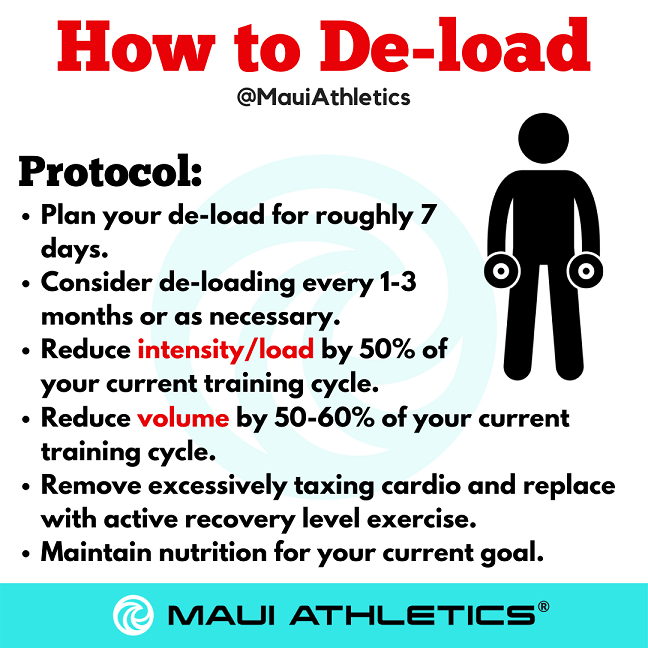Smashing Plateaus
Smashing Plateaus
Intro
We’ve all experienced it. You are progressing in your fitness journey at a steady clip, gaining strength, improving performance, and starting to add some nice lean muscle…then out of nowhere it all seems to stop. This can be demoralizing. No matter what you do, you don’t feel like you can get back on track. What gives?
Stalls can be the result of a number of factors, but true plateaus often mean your body has adapted to whatever specific physical stimulus you are performing.
In this article, we will focus (primarily) on the fitness side of the equation. We will cover what a plateau is, why they occur, how to identify if you are experiencing one, and how to break through them if you are. If you have been tracking your diet consistently and have experienced a stall in your fat loss efforts, you may find my article on Why You Aren’t Losing Weight helpful. On to the good stuff!
What is a Plateau?
A plateau is a common (often frustrating) phenomenon that most people will experience more than once in their fitness journey. In the context of a training program, a plateau is a sudden stall in the noticeable results of your regular workouts. You may no longer feel you are adding muscle like you used to or that your strength has peaked (or even regressed!).
This can be due to a number of reasons, but is commonly because your body adapts to a stimulus. Whether this is strength, cardiovascular training, or fat loss, your body simply becomes more efficient at handling routine stressors in your life, even if you’ve responded favorably to them in the past. These stressors can be anything from squatting a specific weight (for a specific number of sets/reps) to eating a specific calorie amount to create a calorie deficit. After a certain amount of progress, these same stressors produce less and less results.
Because your body adjusts to meet the demands you place on it, this requires you to continually evaluate your practices. Over time, your workout regimen and nutrition will need to evolve based on your progress (or lack thereof). This is how you manage and prevent future stalls from occurring.
Why Plateaus Occur
Your body is a master of adaptation. Similar to the nutrition equivalent experienced during fat loss known as metabolic adaptation, a workout plateau occurs when your body adjusts to the stresses of your exercise regimen. Most stalls occur because of lack of strategic modifications to your training plan, your nutrition, or when you are not listening to your body’s own biofeedback regarding how well you are recovering.
Plateaus may occur because you are not utilizing progressive overload in your training (progressive increases in work that force your body to adapt and overcome), not fueling your body with the proper amount [or type] of nutrition, falling into a psychological rut that leaves you with less motivation and thus less enthusiasm during your workouts, and/or potentially even overtraining. Although it is important to understand that overtraining is far more rare than most people believe, yet it is possible.
Some athletes may notice that new workouts become decidedly easier rather quickly. This does not mean you are not still progressing. There is a ~6 week adaptation period when you begin any new form of training where your muscle and nervous systems learn to perform new movements more efficiently (mostly neural). During this period you will see rapid improvements and amplified muscle soreness. After this initial period, you will continue to see improvements in muscular strength and size at more modest (normal) rates. You will also experience less delayed onset muscle soreness despite continuing to progress.
This slowing of progress rate is not a true plateau, but the normal progression of building muscular strength and size. After a ~12 week period, your body tends to adapt rather well to any static training stimulus through a combination of increased neural efficiency, movement proficiency, cardiovascular adaptations, and other muscular adaptations.
It is important to note, that the more training experience you have, the less pronounced your rate of progress will be. Diminishing returns kick in. Your margin for error also becomes smaller. When you first begin training, almost anything you do works. As you become more advanced, you will have to dial in your practices that much more to see progress.
Ultimately, to continue seeing results you will need to introduce increasing physical stressors in your workouts (primarily through progressive overload), fuel properly via proper nutrition, and listen to your body.
How do I know if I’ve hit a Plateau?
In the majority of cases, “plateaus” are issues with focus, consistency with both a fitness and nutrition program, and stress management.
When transitioning from beginner gains to a more intermediate or advanced experience level, trainees will often believe they are plateaued when they have simply graduated to the next step in their journey. “Newbie” gains are a thing of the past and the new normal rate of progress can often seem disappointing.
When you are an intermediate+ trainee (1-2 consistent years of experience or more), you should not expect to make weekly strength and physique gains. For advanced trainees, sometimes not even monthly gains. For non-beginners, you will want to shift your mindset to monthly-to-yearly (gasp) progress benchmarks.
Assuming you train intensely, fitness and fatigue may often increase concurrently. Proper program design can help optimize your progress while limiting (or entirely preventing) this accumulated fatigue. On occasion, fatigue builds up to levels that limit your progress and a de-load (or lowering of work load) period is warranted. This should also send up red flags to evaluate your practices to see what in your training, nutrition, and recovery may be the reasons for such a high level of fatigue.
Often times, the real indicator of performance progress (or whether you are plateaued) will be to compare benchmark movements or routines at the beginning and end of a cycle (or post de-load). Keep in mind to make sure that variables such as exercise order and life stress are accounted for and held constant.
Short of waiting 1-3 months to test at the end of a training cycle, you can look for other signs of a stall:
- Lack of motivation: this may be biofeedback that you need to prioritize rest either because of physical or mental stress.
- Loss of strength: if you experience a significant decrease in strength, particularly in earlier exercises in a routine and if you are receiving adequate nutrition.
- Lack of progress over time: for non-beginners, you should see some progression of at least the earlier exercises in each training day of your regimen over a 3-4 week period. You will likely progress in exercises earlier in a training session faster than ones that come later in the session due to fatigue from that particular day of training. Often times, simply holding steady in exercises that come later in a session is standard.
- Impaired mental and physical recovery: signs that you are not recovering adequately include fatigue (both mental and physical), joint and muscle pain, being excessively sore by the next time you hit that same training day in a subsequent session, altered sleep and eating patterns, and loss of motivation or focus. Does the idea of following your training/nutrition plan make you feel restless or want to rebel? Is this happening without the outside stressors of work, family, or other obligations? Has this continued for more than a week?
Before you believe you have plateaued, consider the following:
- Track training diligently: make sure you are keeping a training log that follows your exercises, sets, reps, rest periods, every aspect of your workout. Use progressive overload. Are you incorporating too much cardio or volume in your weight training? 10-20 working sets per muscle group per week is appropriate if hypertrophy is your goal. For general trainees or those interested specifically in strength/physique goals, 1.5 to 3 hours per week of cardio is a solid rough recommendation. For those who have a cardio or sport focus in mind (or for more advanced trainees), higher cardio volumes may be appropriate. Weight training may need to be adjusted accordingly for recovery purposes.
- How is your nutrition? Are you weighing and tracking meals consistently? Are you slowly gaining weight assuming you are attempting to gain strength or size? If you are attempting to lose weight (fat), holding steady in the strength department may be the proper expectation.
- How is your stress management? Perceived stress lowers sleep quality which can significantly impact your ability to handle even standard daily stress.1
- How is your sleep? Poor sleep quantity and quality can lead to muscle loss, affect performance, injury risk, depression, can lower skeletal muscle protein synthesis, and reduce fat loss.2-10 Consistency and a regular schedule are important.
- Are my expectations realistic? Setting proper expectations is a must. Do you have unrealistic expectations for how fast you should progress in strength and in your physique development? If you find yourself at a loss here, it may be time to invest in a qualified coach to help in this area.
How to smash through a Plateau
On to the meat and potatoes. You’ve evaluated your practices and even though everything seems to be in the right place, you just don’t seem to be progressing. You’ve given it enough time, something needs to change. Let’s look at what we have in our arsenal that we can use to break this stall.
Strategies:
- Identify weaknesses: Where is your weak link? If you feel stalled with a particular movement, identifying your weakness and strengthening it is your first step. Your weakness is usually easy to spot; it’s the point at which your movement decelerates or sticks. Once you know where you have challenges, you can incorporate training tactics that are specific to your issues. Ex: partial range of motion work around the sticking point, band and chain work, negatives, specific accessory exercises to target weak points, speed work, novel (but purposeful) exercise alterations…there are a myriad of options here that are entirely dependent on your specific challenge.
- Use progressive overload: progressive overload is a principle of training that sees you gradually increase the training stimulus during workouts. These recommendations are assuming you are adequately recovering from workout to workout.
- Go longer or increase volume. Volume may need to increase from current levels. Add more reps, sets, or total time to your cardio. Consider increasing sessions (even two-a-days) if you need more volume to grow, but can’t do enough in a single session without significant fatigue.
- Increase intensity (load/explosiveness): Increase explosiveness, incorporate power movements such as speed work or power cleans, or add in more high intense cardio. Increasing load may mean lifting heavier weights, wearing a weight vest during cardio, doing hills/increasing incline, or greater resistance on cardio machines. If you are able to maintain proper form and bring the set close to failure, you have chosen the right weight. My preferred way to break a plateau is to train with more intensity. Almost no one trains intensely enough, this is something you should evaluate critically. Check out my article on Becoming Comfortable with Discomfort for further information.
- Change your routine: challenge your body in new ways. If you have been training for 2-3 months with the same routine, it may be time to add in some variety. Lifting weights in a different order than usual (prioritizing important lifts first) or using different exercises entirely can help cover weak points as well as add some mental stimulation. Beyond exercise selection, volume, and load, changing up your routine with novel stimuli such as eccentric loading has been shown to potentially increase strength progression.11 By altering the stressors your body faces, it is forced to adapt to new challenges.
- Set a goal: anything you can control is a good goal to shoot for. Planning to compete in a triathlon, a powerlifting competition, or any of the various local competitions in your area are great ideas. You can even set your goal as improvement. “I want to improve my deadlift as much as I can in six months” is a perfectly worthy choice. As long as it is something that will engage and motivate you, you are on the right track.
- Schedule regular rest days: are you chronically sore, even to the point it impedes your progress in subsequent workouts? Embrace strategic rest. Rest is where the magic happens. Muscles adapt (get larger/stronger) when you rest. By working out too much you reduce your capacity to exercise, fatigue quicker, risk insomnia, stress, and loss of appetite. One to two rest days per week is a good (albeit generic) recommendation. Advanced athletes can listen to their own biofeedback to let them know when to pump the brakes.
- Prioritize your recovery: how are your nutrition, sleep, hydration, and stress-management? Is your training volume too high? If you find you are excessively sore from one workout to the next, and certainly if your effort is hampered by soreness the following workout of the same muscle group or specific exercise, your recovery is likely taking a hit. Evaluate your volume, exercise selection, and adjust accordingly or you may force yourself into a de-load (more on that later). This may be a grey area when you first start training or the first few weeks of a new training cycle as DOMS is certainly heightened. Figure out if any of these are elevated beyond what your body can handle and address the root cause.
- Use proper inter-set rest periods: most trainees do not give themselves enough rest in between sets. Proper rest between sets is a must if you want to be firing on all cylinders each and every time you hit the weights. 30 to 45 seconds just doesn’t cut it for most resistance training applications. Learn proper timing here.
- Change the view: maybe you are bored with your program or style of training. Try strength training if you traditionally bodybuild, try functional fitness if you are a powerlifter, go for a run if you are a strongman (RIP). Sometimes the plateau is because you simply aren’t emotionally or mentally engaged. Take your training outdoors, to a new gym, with a new partner, or try classes such as spin or functional fitness/circuit training to shake things up. This can give your mind some stimulation while allowing your muscles to learn new tricks.
- Improve your form: building muscle/strength gives you the ability, but proper form allows you to properly wield it. Perfect your technique to get the most out of your body.
- De-load: a training de-load is a period where you lift less weight or reduce your training volume to allow for marked improvements to your accumulated physical and mental fatigue. If none of the previous options have worked, or if you feel fatigue is extremely significant, a break from your regular routine can let you recharge. The need for a de-load also gives you some hints that training practices may need to be evaluated. De-loads do not necessarily mean being sedentary, but can if you so choose (for a planned period of time). I will go over how to properly perform a training de-load in the next section. A similar tactic can be employed for nutrition if you find yourself rebelling against your standard fare; how about a structured nutrition break? Take a 1 to 2 week break from your diet to prevent burnout and to refuel your passion. This doesn’t mean go off the rails, but instead of a regimented routine be more flexible, don’t track, and eat with moderation in mind. Push lean protein, and fruits and veggies at each meal, but otherwise don’t worry about it…and there is always room for a little cake on the side.
If all else fails: get a coach. Even professional athletes and coaches have coaches. Proper program design requires knowledge of nutrition, training methodology, and physiology. Programs should be personalized based on goals, current body composition, abilities, and preferences.
Hiring a skilled coach also gives you someone to bounce ideas off of, someone to hold you accountable, and invests you both mentally and monetarily. All of these facets add up to higher chances of success in the long run.
How to De-load
I am sharing my personal prescription for how I like to de-load based off of my experience. You will find other coaches have certain modifications to this (these are perfectly reasonable); some people simply take an entire week off and stay active doing things they enjoy like hiking or swimming. Advanced trainees do not follow a specific time cycle for de-loads, but rather listen to their body’s feedback.
In reality, if we are following proper programming, our own schedules often de-load us sufficiently with vacations, celebrations, and other obligations. The important thing is you are feeling adequately recovered, both mentally and physically.
Summary
As you see, plateaus can happen for a variety of reasons. Sometimes it is due to too little volume or intensity, sometimes too much, and other times plateaus are good indicators of a successful training cycle coming to an end.
If you do find yourself in a fitness plateau, don’t let it stress you out. You now have a variety of ways to identify and push through your stall, all the way back to making solid progress. If you are still dragging after you’ve changed up intensity (load, explosiveness), volume, and after you’ve made form improvements, then it may be time for a de-load followed by a change of routine.
It isn’t easy, but balancing training and recovery is a must to progress to more advanced levels. Listen to your body, make a plan, and adapt when needed.
Citations
- Charles 2011. PMID: 22900457
- DOI: 10.1080/02640414.2019.1662539
- DOI: 10.1136/bjsports-2017-097890
- DOI: 10.1016/j.jsmc.2019.11.005
- DOI: 10.1093/sleep/zsy027
- Saner 2020. https://doi.org/10.1113/JP278828
- Dong-woo 2018. PMID: 29671770
- DOI: 10.3390/ijms21093106
- doi: 10.1059/0003-4819-153-7-201010050-00006
- DOI: 10.7326/0003-4819-153-7-201010050-00006
- Walker 2016. https://doi.org/10.3389/fphys.2016.00149











